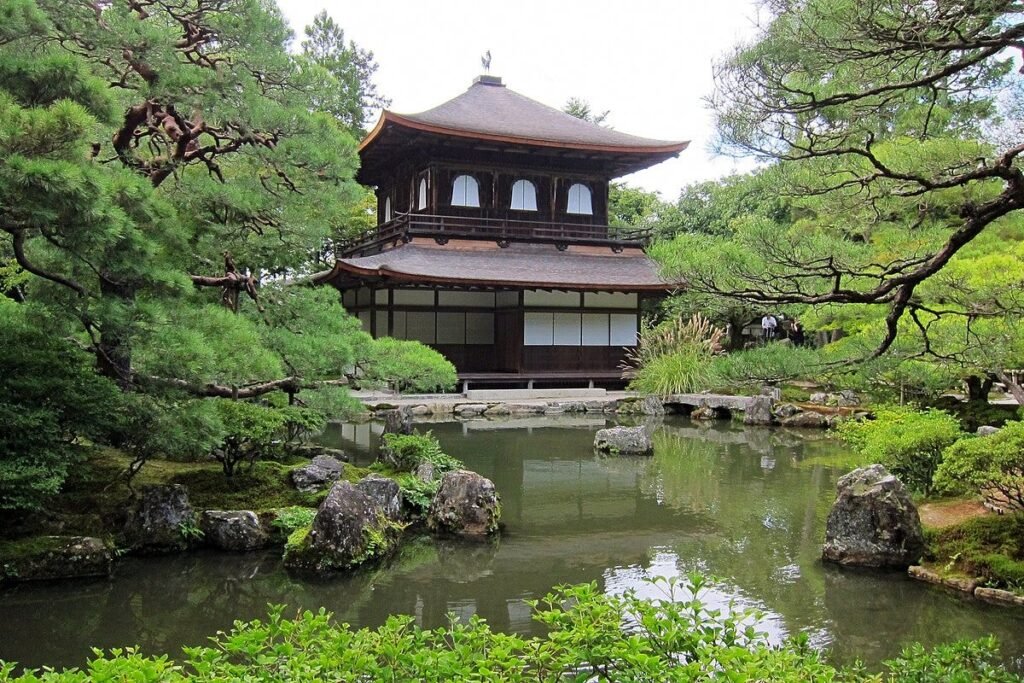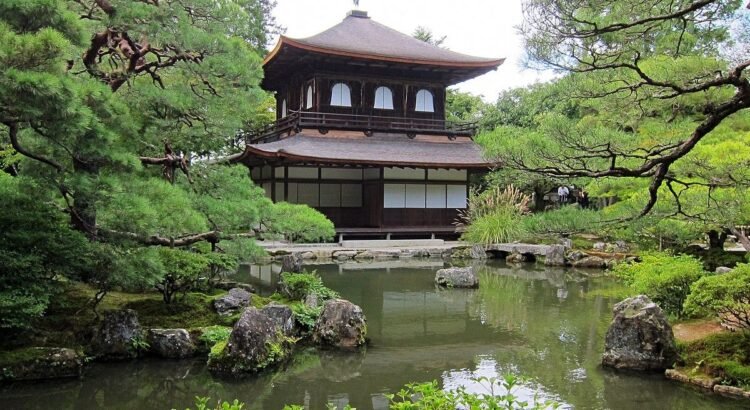
In a world driven by speed, ambition, and unrelenting noise, few places offer the kind of stillness and introspection found in Japan’s ancient temples and tranquil gardens. To journey through Japan is to embrace a cultural philosophy where harmony with nature, inner peace, and spiritual mindfulness are not only encouraged—they are beautifully enshrined in every stone path, koi pond, and temple bell.
From the zen temples of Kyoto to the moss-covered serenity of Nara, this meditative journey through Japan invites travelers not to rush, but to breathe. With every carefully raked gravel bed, every whispering bamboo grove, and every incense-filled hall, one finds an invitation to slow down and reconnect—with self, nature, and something deeper.
Kyoto: The Heart of Zen and Japanese Aesthetics
Begin your pilgrimage in Kyoto, Japan’s cultural heart and former imperial capital. Home to over 1,600 Buddhist temples and 400 Shinto shrines, Kyoto is not just a city—it is a living museum of Japan’s spiritual and aesthetic legacy.
One of the most iconic temples is Kinkaku-ji, the Golden Pavilion. Coated in shimmering gold leaf and mirrored perfectly in the still waters of its reflecting pond, this Zen Buddhist temple is both opulent and meditative. As you stroll its surrounding garden, the reflections in the water remind you of impermanence—one of the central teachings of Zen.
For a deeper spiritual experience, visit Ryoan-ji, famed for its dry rock garden. Comprising 15 stones placed in meticulously raked white gravel, the garden embodies the Zen concept of minimalism. No matter where you stand, one stone remains hidden—a silent lesson in perspective and the limitations of perception. Visitors often sit quietly on the wooden veranda, letting the garden’s stillness seep into their thoughts.
Then there’s Ginkaku-ji, the Silver Pavilion, which despite its name is not silver. Instead, it radiates an austere, natural beauty that contrasts with Kinkaku-ji’s opulence. The surrounding moss garden and sand sea evoke harmony through simplicity, making it a haven for quiet contemplation.
Wandering through Kyoto’s Philosopher’s Path, especially during cherry blossom season, is a journey in itself. The canal-side walkway connects many temples, including Eikan-do and Nanzen-ji, and is named after Nishida Kitaro, a famous philosopher who meditated here daily. With the soft rustle of leaves and gurgling water beside you, every step becomes a moving meditation.
Nara: Sacred Deer and Spiritual Legacy
A short train ride from Kyoto brings you to Nara, home to Japan’s largest bronze Buddha and a peaceful population of sacred deer. The city’s historic significance as Japan’s first permanent capital makes it a spiritual cornerstone.
At Todai-ji Temple, you’ll encounter the Daibutsu, a 15-meter-tall bronze Buddha seated inside the world’s largest wooden structure. The sheer scale of the hall and the gentle gaze of the Buddha instill a sense of awe and humility. Around the temple grounds, deer—considered messengers of the gods—roam freely, adding to the sense that this is a place where nature and spirituality coexist.
For a quieter sanctuary, visit Kasuga Taisha, a Shinto shrine famed for its thousands of stone and bronze lanterns. Walking through the lantern-lined paths in the early morning mist, when light filters through the trees, is like stepping into a sacred dreamscape.
Nearby, Isuien Garden offers a delicate balance of natural and man-made beauty. Designed to highlight borrowed scenery—like Mount Wakakusa in the background—it’s a perfect place to reflect on the interconnectedness of all things.
Kamakura: Coastal Zen and Great Buddha Vibes
Heading south to the coastal town of Kamakura, once the political center of medieval Japan, you’ll find a quieter alternative to the bustle of Tokyo. Kamakura is home to some of the oldest Zen temples in the country.
The Great Buddha (Daibutsu) at Kotoku-in Temple is perhaps the most iconic symbol of Kamakura. Sitting in peaceful majesty under the open sky, this 13-meter bronze statue radiates a serene presence that draws visitors into silent reverence.
Nearby, Hasedera Temple, perched on a hillside, offers sweeping ocean views and a beautifully tiered garden. Inside, the temple houses a towering statue of the eleven-faced Kannon, the goddess of mercy, inviting silent prayers and emotional release.
One of the most atmospheric temples is Engaku-ji, nestled among forested hills. Founded to honor samurai who died defending Japan from Mongol invasions, the temple’s tranquil grounds and ancient gates feel far removed from modern life. Walking through its grounds as the breeze rustles bamboo and temple bells toll gently in the distance evokes a time-stopping stillness.
Tokyo: Hidden Oases in the Urban Sprawl
Though Tokyo is a bustling metropolis, it holds secret gardens and spiritual sites that offer calm amid chaos. Meiji Jingu Shrine, tucked inside a sprawling forest in the heart of the city, is a sanctuary of stillness. The moment you pass through its towering torii gate, the city noise vanishes, replaced by the whisper of trees and the soft sound of footsteps on gravel.
In Ueno Park, you’ll find Kiyomizu Kannon-do, a peaceful hilltop temple modeled after its more famous Kyoto counterpart. While smaller, its location offers a place to pause and gaze over the treetops.
For garden lovers, Rikugien Garden in Bunkyo Ward provides a poetic escape. Designed to reflect scenes from classical Japanese literature, the garden’s meandering paths, tea houses, and seasonal colors create a world steeped in tradition and mindfulness.
Mount Koya: A Sacred Pilgrimage
For a truly immersive spiritual experience, travel to Mount Koya (Koya-san), the heart of Shingon Buddhism in Japan. Nestled in the mountains of Wakayama Prefecture, this remote monastic complex is home to over 100 temples, many of which offer shukubo—temple lodging where you can sleep, eat, and meditate like a monk.
Waking up to the sound of monks chanting sutras, eating shojin ryori (Buddhist vegetarian cuisine), and joining morning rituals is a transformative experience. At Okunoin Cemetery, where thousands of moss-covered graves line lantern-lit paths, the spiritual weight of the place is palpable. The mausoleum of Kobo Daishi, founder of Shingon Buddhism, is a place of quiet power and reverence.
Koya-san reminds you that spirituality in Japan is not confined to prayer or ritual—it is in the atmosphere, the food, the footsteps, and the silence.
The Art of the Garden: Nature As A Mirror
Japanese gardens are not just decorative spaces—they are expressions of philosophy. In every stone, tree, and pond lies a metaphor. These gardens invite you not to look, but to see; not to walk, but to journey inward.
Kenroku-en in Kanazawa is considered one of Japan’s three great gardens. With its six attributes of beauty—spaciousness, tranquility, artifice, antiquity, water, and panoramic views—it encapsulates the ideal of landscape perfection.
In Okayama, Koraku-en features wide lawns, tea plantations, and winding streams that reflect the aesthetics of harmony and impermanence. Meanwhile, Adachi Museum of Art in Shimane offers a unique blend of Zen garden and visual art, with floor-to-ceiling windows that frame living paintings of meticulously curated landscapes.
Every garden, from the grand to the humble, whispers a message: in nature, one finds clarity.
Tea, Incense, And Inner Calm
To deepen your meditative journey, partake in Japan’s traditional arts that align with its spiritual values. A tea ceremony, for instance, is not simply about drinking matcha—it is a slow, deliberate ritual of mindfulness, respect, and harmony. Each movement is intentional, each silence a space for reflection.
Similarly, kōdō—the way of incense—is a centuries-old practice where participants appreciate the subtle notes of aromatic woods, training the mind to focus and awaken the senses.
Many temples, such as Shoren-in or Daitoku-ji in Kyoto, offer short sessions where visitors can learn to sit zazen (seated meditation), make incense, or witness the tea ceremony. These practices are not performative; they are transformative, revealing inner truths through outer stillness.
The Spiritual Essence of Slowness
To journey through Japan’s temples and gardens is to embrace slowness. Here, spiritual connection is not something you force—it is something that arises naturally when you align with the rhythm of the place.
Whether you are:
- Ringing a temple bell that echoes across mountains,
- Watching maple leaves fall like whispers in a garden,
- Or sitting still as incense curls into air,
…you begin to remember something ancient and true: peace is not something to be found elsewhere—it is already within, waiting to be revealed in silence.
Final Thoughts: A Journey Within
This meditative journey through Japan’s sacred spaces is more than a travel itinerary—it is a pilgrimage of the soul. While photos may capture the temples and gardens, it is the quiet moments of realization, the gentle shifts in awareness, and the deep breaths taken under ancient trees that remain with you long after your return.
In Japan, the sacred is not separate from the everyday. It is in the rustle of bamboo, the curve of a bridge, the chant of monks, and the still water of a koi pond. Let these temples and gardens guide you—not just through the physical landscapes of Japan, but through the inner landscapes of your own heart.
And in that journey, may you find what so many have discovered across centuries in this land of quiet wisdom:
Stillness is not empty. It is full of peace.




